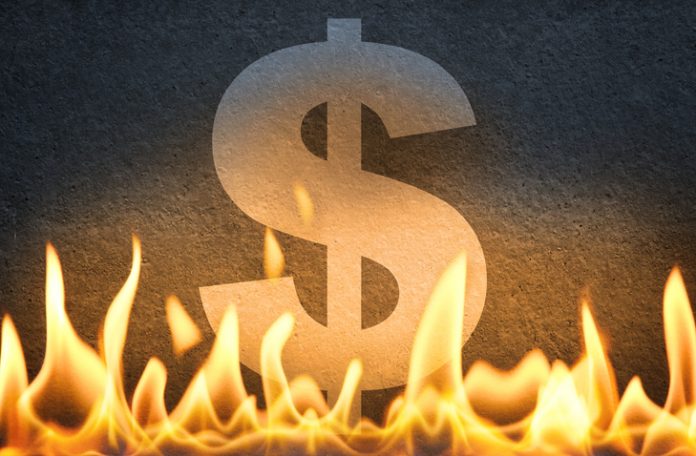Welcome disinflation, but beware; it is in spite of, rather than owing to, the Federal Reserve, says economist Peter C. Earle.
There are increasing signs the 2021 – 2022 inflationary surge is softening. The headline Consumer Price Index (CPI) measure, released yesterday, showed a decline in year-over-year prices from 7.1 percent in November 2022 to 6.5 percent in December 2022. While still elevated in comparison to the last four decades, all of the major inflation indicators are down from the highs of this summer. That assessment could easily prove premature (during the 1970s, the end of spiking prices was called any number of times before Volcker’s decisive measures were taken) but for now, it appears that the worst is behind us.
Even if that is the case, and disinflationary conditions become the prevailing economic environment over the next few years, both the pace at which the decline in the general price level proceeds, and the price that will be paid for contractionary monetary policies, namely a recession, are issues looming in the near future.
An additional concern involves the cultural apprehension of current events. Popular narratives play a nontrivial role in the perception of policies and the formation of public perspectives toward government institutions and affiliated agencies. Many citizens, understandably, gravitate toward explanations which meld most harmoniously with their existing views. Yet, the impact of narrative power is still underappreciated among economists.
In 2017, Dr. Robert J. Schiller, Yale University Professor and 2013 Nobel Memorial Prize winner, noted the social sciences, anthropology, history, sociology, psychology, and political science, have a demonstrably higher research focus on the study and effects of narratives than does economics. This matters. The world we are in feeds directly into the world we will soon be in, and the consensus explanations in formation today will become authoritative accounts tomorrow.
Take for example the monetary policy campaign between 1993 and 1995, which led to former Fed Chairman Alan Greenspan’s widespread coronation as the “Maestro.” Now known as the “soft landing,” the idea that under the masterful guidance of Greenspan, the Fed skillfully threaded a narrow path between higher inflation and slowing growth (or a recession) is one that prevails to this day. But like many established economic narratives, this one has coalesced along decidedly partisan lines.
In fact, numerous other factors were at work in creating the mid-1990s conditions for which the Fed has received so much acclaim. Global oil prices had come down substantially after the first Gulf War. Markets in Eastern Europe and Russia were opening for the first time in a half century, and trade with China began booming. All the while, technological advances, still a few years before the internet revolution began, were rapidly boosting productivity. The “soft landing” was also not as “soft” as is remembered. The increase in interest rates led to a spike in defaults and bankruptcies, with total (business and non-business) bankruptcy filings spiking by 34.6 percent between 1993 and 1996. The bond market crashed, hindering many firms’ access to financing.
Two large crises occurred: the largest municipal bankruptcy filing in US history in Orange County, CA, and the Mexican Peso Crisis, both of which were directly tied to rising interest rates. If more skepticism had been expressed regarding what central bankers can actually do, or more caution voiced regarding the complex nature of monetary policy and its effects, who knows? The late 1990s dot com bubble, the 2002 bear market, and the early 2000s housing bubble (which led directly to 2008’s Great Recession) would likely have unfolded differently, if at all.
The Biden administration has blamed the rise in prices on the COVID virus, Vladimir Putin, gas station owners, ocean shipping firms, and other preposterous scapegoats. Fortunately, none has been especially persuasive to the American people. A more subtle shift may occur, however, as prices descend and the memories of beleaguered consumers get shorter.
A current chronology, and the one that happens to be the most accurate, is that the last two years of inflation are the pernicious, unintended consequence of panicked, one-trick-pony monetary technocrats. But as with the so-called soft landing in 1994, a competing narrative is likely to emerge. In this one, central bankers will have addressed an existential risk by adroitly inundating the world with trillions upon trillions of dollars. In so doing, they expertly engineered a spike in inflation to save the world from catastrophe, then deftly stubbed out the conflagration when exigencies had abated.
Should that narrative prevail, a number of unfortunate consequences are possible. At the very least, a Fed thusly venerated is likely to be the beneficiary of greater political imprimatur. That would be a regrettable step backward, at a time when closer scrutiny of their conflicting mandates and increasingly “woke” policycraft is sorely needed. Central banks globally may become emboldened to undertake more monetary policy hijinks. Worst of all, future monetary policy officials may come to view U.S. pandemic-era monetary policies as indicative of a new level of proficiency, and seek to apply it in the future.
The recent updraft in inflation has been ruinous and unnecessary, but nevertheless highly instructive. Let us all hope that disinflation proceeds expeditiously and, if it does, that we remain mindful that the outcome is in spite of, rather than owing to, central bankers and their narrow assortment of lagging and unpredictable policy instruments.
Originally published by the American Institute for Economic Research. Republished with permission under a Creative Commons Attribution 4.0 International License.
For more Budget & Tax News.











